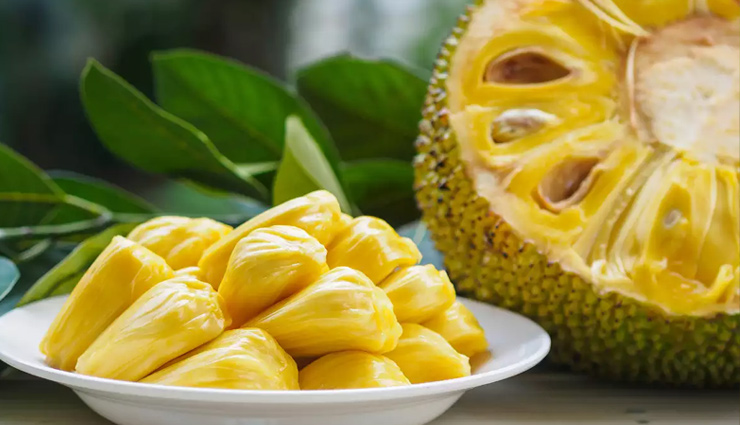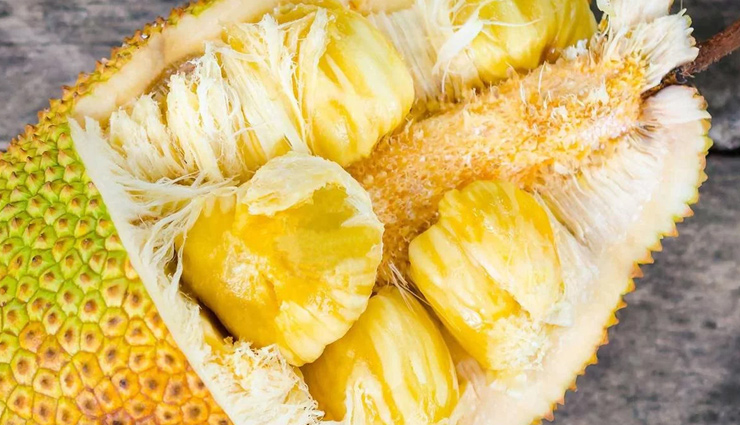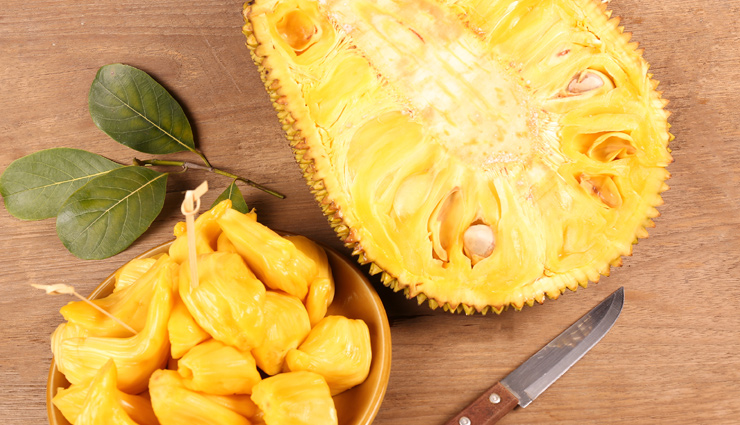- Home›
- Healthy Living›
- Jackfruit Is Not Only Helpful To Control Diabetes But Also Prevents Cancer, Read More Benefits
Jackfruit Is Not Only Helpful To Control Diabetes But Also Prevents Cancer, Read More Benefits
By: Priyanka Maheshwari Mon, 31 Aug 2020 11:36:02

Jackfruit is absolutely one of a kind tropical fruit recognized for its unique shape, and size. The fruity flavor of its sweet arils (bulbs) can be appreciated from a distance. In common with other tropical fruits such as durian, banana, etc., it is also rich in energy, dietary fiber, minerals, and vitamins and free from saturated fats or cholesterol; fitting it into one of the healthy treats to relish!
Botanically, this popular Asian tropical fruit belongs to the family of Moraceae, of the genus: Artocarpus and is closely related to figs, mulberry, and breadfruit. Scientific name: Artocarpus heterophyllus.
Jackfruit is a huge tree that grows to as high as 30 meters, larger than mango, breadfruit, etc. It is believed to be indigenous to the Southwestern rain forests of India. Today, it widely cultivated in the tropical regions of the Indian subcontinent, Thailand, Malaysia, Indonesia and Brazil for its fruit, seeds, and wood. The tree grows best in tropical humid and rainy climates but rarely survives cold and frosty conditions.

In a season, each tree bears as many as 250 large fruits, supposed to be the biggest tree-borne fruits in the world. The fruit varies widely in size, weigh from 3 to 30 kg, and has oblong or round shape, measuring 10 cm to 60 cm in length, 25 to 75 cm in diameter. While unripe fruits are green, they turn light brown and spread a strong sweet, fruity smell once ripe.
As in the durian fruit, the outer surface of the jackfruit is also covered by blunt spikes which become soft as the fruit ripen.
Its interior consists of eye-catching orange-yellow color edible bulbs. Each bulb consists of sweet flesh (sheath) that encloses a smooth, oval, light-brown seed. There may be as many as 50 to 500 edible bulbs embedded in a single fruit interspersed in-between thin bands of fibers.
Jackfruit seed encased inside a thin, transparent outer cover. It largely composes of starch and protein. Each seed measures about 2 to 4 cm in length, and 1 to 3 cm in thickness.
Almost all the parts of the tree secrete white sticky latex-like milk (juice) upon infliction of injury.

* 100 g of edible jackfruit bulbs provide 95 calories. The fruit made of soft, easily digestible flesh (arils) made up of simple sugars like fructose and sucrose that when eaten replenishes energy and revitalizes the body instantly.
* Jackfruit is rich in dietary fiber, which makes it a good bulk laxative. The fiber content helps protect the colon mucosa by binding to and eliminating cancer-causing chemicals from the colon.
* The fresh fruit has small but significant amounts of vitamin-A, and flavonoid pigments such as carotene-ß, xanthin, lutein, and cryptoxanthin-ß. Together, these compounds play vital roles in antioxidant and vision functions.
* Vitamin-A also required for maintaining the integrity of mucosa and skin. Consumption of natural fruits rich in vitamin-A and carotenes has been found to protect from lung and oral cavity cancers.

* Jackfruit is a good source of antioxidant vitamin-C, provides about 13.7 mg or 23% of RDA. Consumption of foods rich in vitamin-C helps the body develop resistance against infectious agents and scavenge harmful free radicals.
* It is one of the rare fruits that is rich in a B-complex group of vitamins. It contains outstanding amounts of vitamin B-6 (pyridoxine), niacin, riboflavin, and folic acid.
* Further, fresh fruit is a good source of potassium, magnesium, manganese, and iron. Potassium is an important component of cell and body fluids that helps controlling heart rate and blood pressure.





